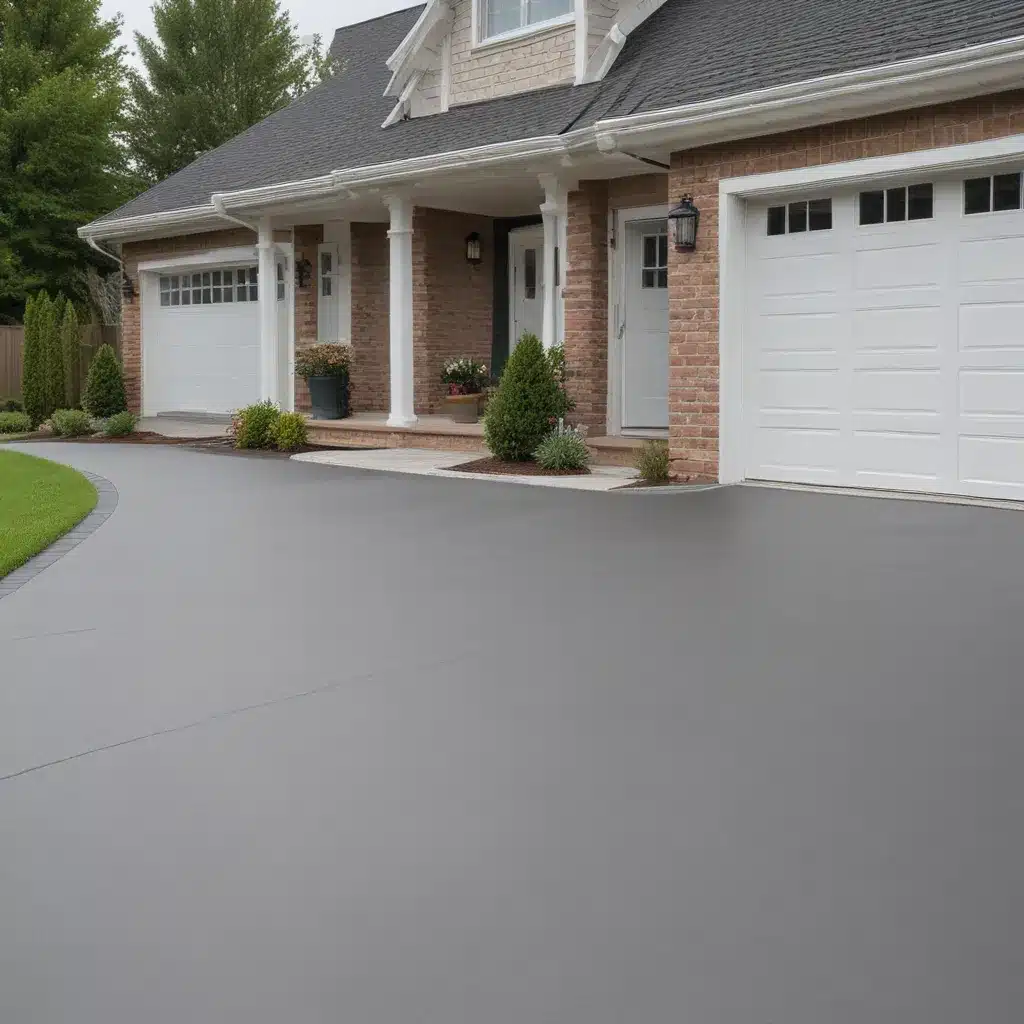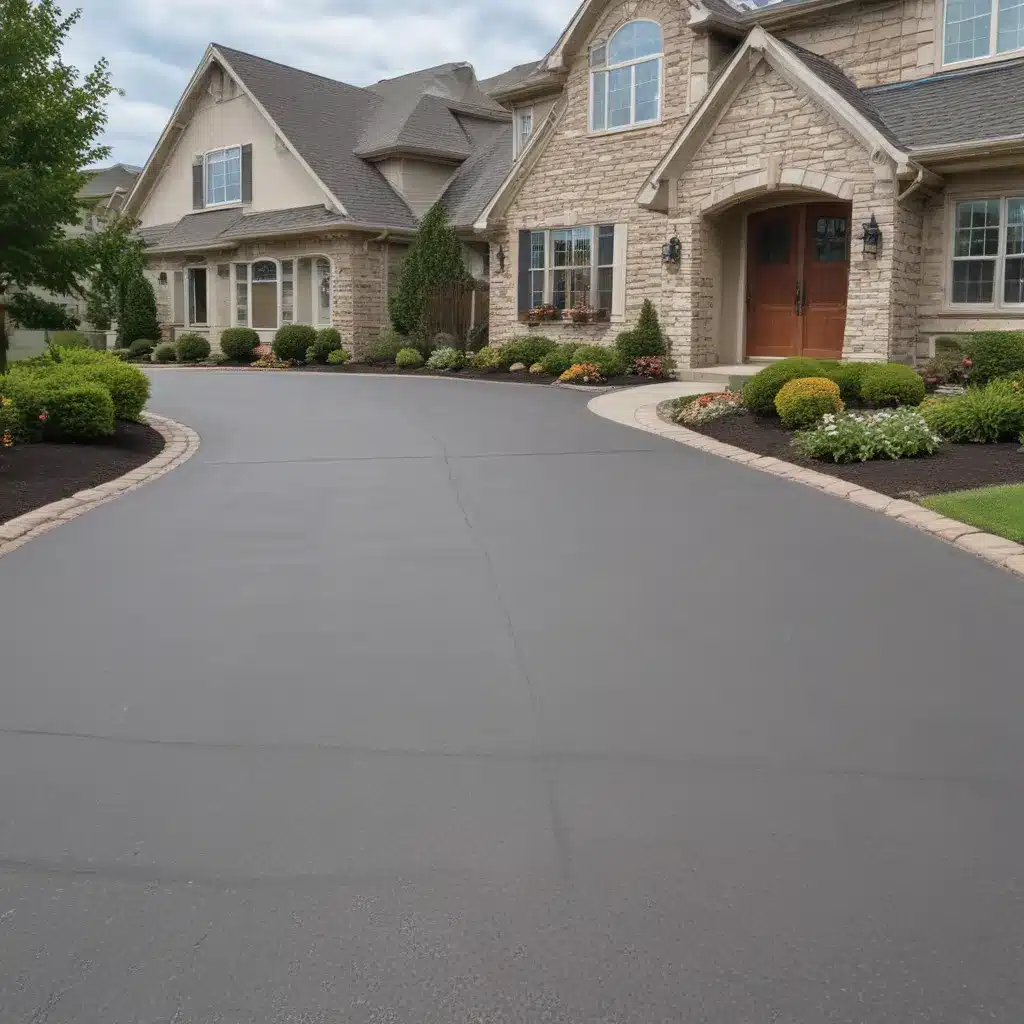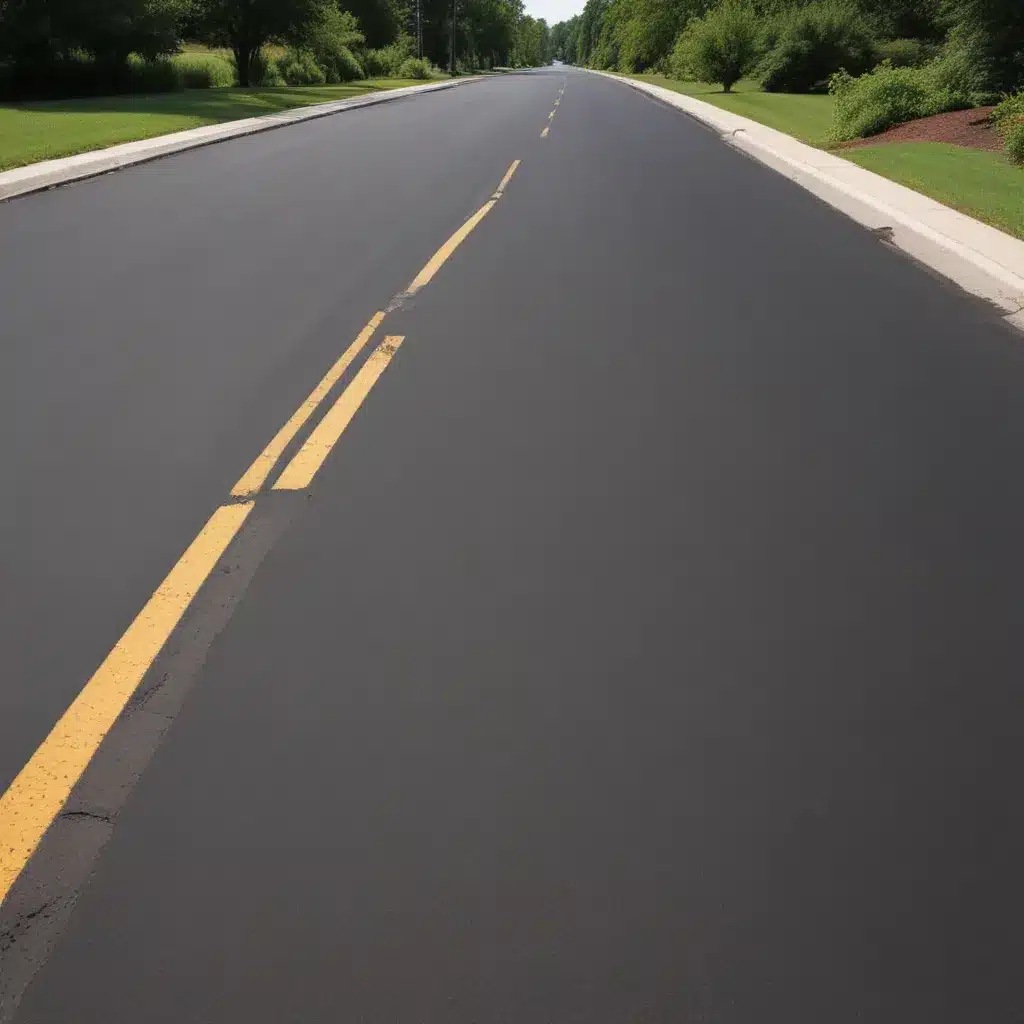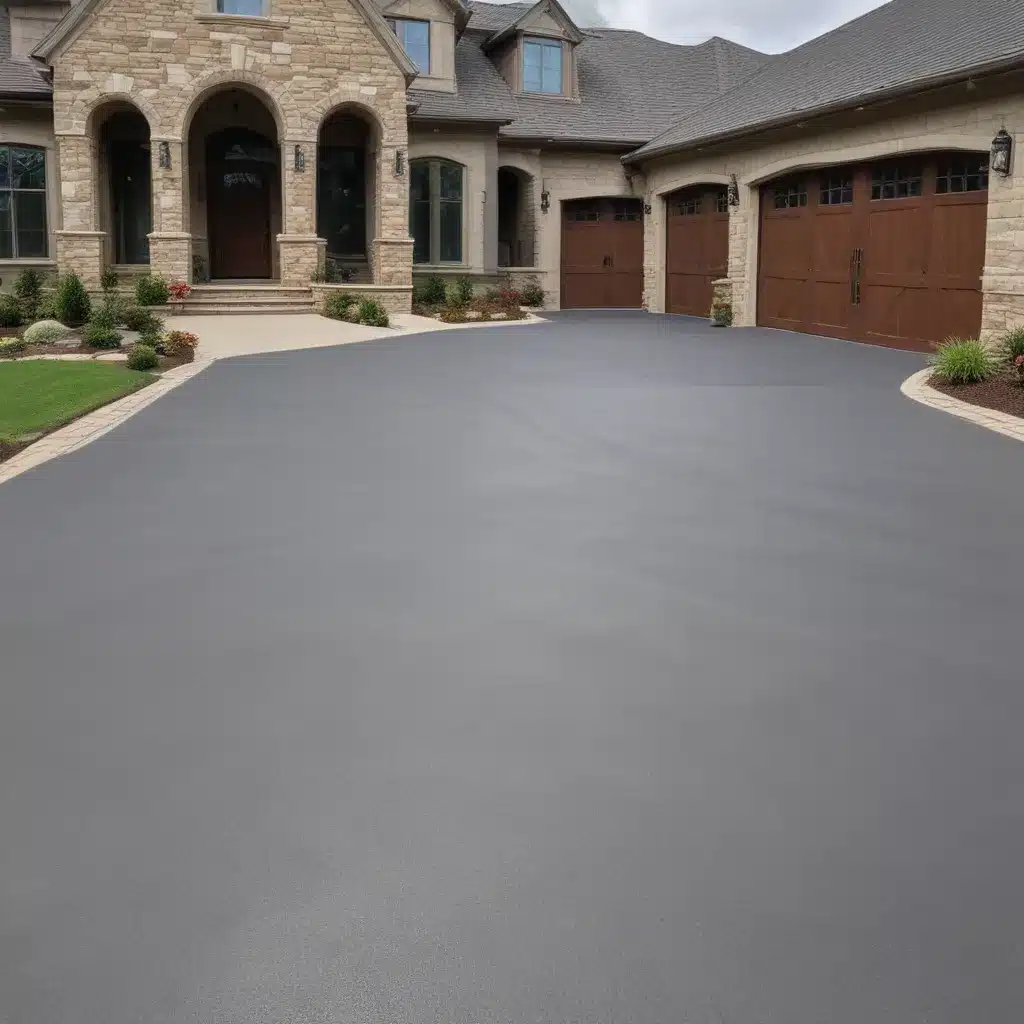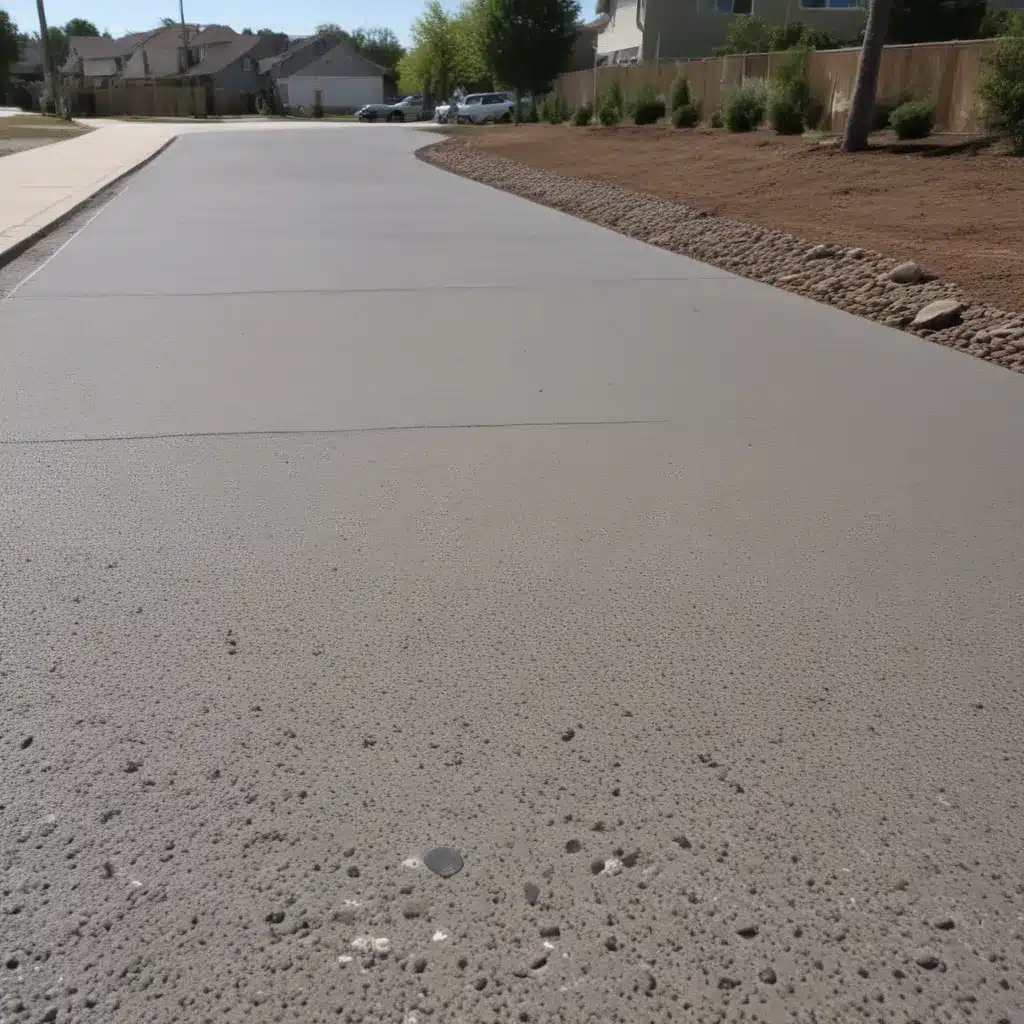Avoiding a Slippery Slope: The Importance of Slip-Resistant Driveways
As a homeowner, the safety of my family and visitors is always my top priority. And when it comes to our driveway, that sentiment couldn’t ring more true. You see, I’ve had my fair share of close calls over the years – a near-miss with an icy patch here, a treacherous puddle there. It’s enough to make your heart skip a beat (and your car fishtail out of control).
That’s why I’m on a mission to find the most slip-resistant driveway solution for our home. Because let’s be real, no one wants to end up on their backside just trying to get to the front door. And with the unpredictable British weather, the risk of a nasty tumble is ever-present. So, I’ve done my research, consulted the experts, and I’m here to share my findings. Strap in, because we’re about to dive deep into the world of driveway safety.
Identifying the Culprits: Common Driveway Slip Hazards
Now, before we can tackle the slip-resistant solutions, it’s important to understand the common culprits behind those treacherous driveway conditions. After all, knowledge is power, and the more we know about the problems, the better equipped we’ll be to find the right fixes.
Let’s start with the big one – ice and snow. When the mercury plummets and the white stuff starts to fall, our driveways can quickly transform into skating rinks. And it’s not just the obvious icy patches that pose a threat; those sneaky little snowdrifts can be just as treacherous. One minute you’re strolling confidently to your car, the next you’re doing an unintentional ice dance, desperately trying to regain your balance.
But it’s not all about the winter wonderland. Heavy rainfall can also wreak havoc on our driveways, creating slippery, muddy messes that are just begging for a twisted ankle (or a thoroughly soaked pair of shoes). And let’s not forget about the ever-present threat of moss and algae – those slimy culprits can turn even the most well-maintained driveway into a hazardous obstacle course.
The moral of the story? Our driveways are a minefield of potential slip hazards, just waiting to trip us up (sometimes quite literally). But fear not, my fellow homeowners, because help is on the way.
Evaluating the Options: Slip-Resistant Driveway Materials
Alright, now that we’ve identified the slip-hazards, it’s time to explore the various driveway materials that can help us stay upright and sure-footed. And let me tell you, there are quite a few options to choose from.
First up, we’ve got good old-fashioned concrete. Now, I know what you’re thinking – “Concrete? Isn’t that just a slippery death trap waiting to happen?” And you’d be partially right. Untreated concrete can be a bit of a slip-and-slide, especially when the weather takes a turn for the worse. But fear not, because there are ways to give concrete a bit of a grip-enhancing makeover.
One popular solution is to incorporate anti-slip additives into the concrete mix. These clever little compounds can give the surface a rougher, more textured finish, providing much-needed traction for our shoes (and tires). Another option is to have the surface professionally etched or grooved, creating a series of tiny ridges and channels that help disperse water and prevent pooling.
But if you’re really looking to take your driveway slip-resistance to the next level, you might want to consider a paving stone or brick option. These materials naturally provide a bit more grip, thanks to their slightly uneven surfaces and the tiny gaps between each unit. And let me tell you, the aesthetic appeal of a beautifully laid brick or stone driveway is just the icing on the non-slip cake.
Of course, no discussion of slip-resistant driveway materials would be complete without mentioning the ever-popular asphalt. Now, I know what you’re thinking – “Asphalt? Isn’t that just a smooth, slippery mess?” And you’d be right, to an extent. Untreated asphalt can be a bit of a slippery slope (pun intended). But fear not, because there are ways to give this versatile material a bit of a grip-enhancing makeover.
One popular solution is to incorporate a specialized anti-slip aggregate into the asphalt mix. These tiny, rough-textured pebbles and stones can provide a much-needed boost in traction, helping to prevent those dreaded skids and slides. And if you really want to go the extra mile, you can even opt for a specialized asphalt sealant that’s designed to enhance the surface’s slip-resistance.
So, there you have it – a veritable smorgasbord of slip-resistant driveway options, each with their own unique set of benefits and drawbacks. The key is to weigh your priorities, consider your local climate, and choose the material that best fits your needs (and your budget). After all, when it comes to driveway safety, there’s no room for compromise.
Putting it All Together: Designing a Slip-Resistant Driveway
Now that we’ve explored the various slip-resistant driveway materials, it’s time to put it all together and start planning our dream driveway. And let me tell you, there’s a lot more to it than just picking the prettiest pavers or the smoothest asphalt.
First and foremost, we need to consider the overall slope and drainage of our driveway. Because let’s be honest, a flat, level surface is going to be far more slip-resistant than a steep, sloping one. And when it comes to drainage, we want to make sure that any rainwater or melted snow has a clear path to flow away, rather than pooling and creating those pesky slippery spots.
But it’s not just about the big-picture design elements – the devil, as they say, is in the details. And when it comes to slip-resistance, those details can make all the difference. For example, if we’re opting for a paved driveway, we need to pay close attention to the size and spacing of the individual pavers or bricks. Too wide of a gap can create a tripping hazard, while too tight of a fit can reduce the overall traction.
And let’s not forget about the edges and borders of our driveway. These often-overlooked areas can be surprisingly treacherous, especially if they’re not properly sealed or finished. A crumbling, uneven edge can be a recipe for disaster, so we’ll want to make sure everything is clean, smooth, and seamlessly integrated.
But the real key to a truly slip-resistant driveway? Ongoing maintenance and upkeep. Because let’s face it, even the most expertly designed and constructed driveway can become a hazard if we don’t stay on top of it. That means regularly sweeping away leaves, clearing away snow and ice, and keeping an eye out for any cracks, holes, or other potential slip-inducing culprits.
And let’s not forget about the importance of choosing the right driveway sealant or coating. These specialized products can not only protect the surface from the elements, but they can also enhance its slip-resistance, providing an extra layer of traction and grip.
So, there you have it – the recipe for a truly slip-resistant driveway. It’s a delicate balance of design, materials, and ongoing maintenance, but trust me, it’s a recipe worth following. After all, the safety of our loved ones (and our own backsides) is at stake. And in my book, that’s a risk that’s just not worth taking.
Putting it to the Test: Real-World Slip-Resistant Driveway Stories
Now, as much as I’d love to regale you with tales of my own driveway safety triumphs, the truth is, I’m still in the planning stages of my ultimate slip-resistant masterpiece. But that doesn’t mean I don’t have a few inspiring stories to share.
Take, for example, the case of my dear friend, Kathy. A few years back, Kathy had the misfortune of taking a tumble on her icy driveway, resulting in a nasty sprain and a trip to the emergency room. Needless to say, it was a wake-up call, and Kathy knew she had to take action to prevent a repeat performance.
So, she did her research, consulted the experts, and ultimately settled on a beautifully textured concrete driveway, complete with specialized anti-slip additives. And let me tell you, the transformation was nothing short of remarkable. Gone were the treacherous icy patches and the perilous puddles, replaced by a surface that provided a confident, sure-footed grip, even in the worst of weather.
“It was a game-changer,” Kathy told me, a grin spreading across her face. “I used to dread going out to my car in the winter, but now I walk with a spring in my step, knowing that my driveway has my back.”
And then there’s the case of my neighbor, Tom, who decided to tackle his driveway slip-problem head-on by opting for a stunning paver-brick design. Now, Tom’s driveway is no small feat – it’s long, winding, and situated on a bit of a slope. But with the help of a skilled contractor, he was able to create a surface that not only looked amazing but also provided unparalleled traction, even in the rain.
“I used to have to be so careful, especially with my elderly parents visiting,” Tom confided. “But now, I can confidently stroll down my driveway without a care in the world. It’s given me, and my family, such peace of mind.”
And let’s not forget about the case of the Jones family, who decided to take the asphalt route, but with a twist. Instead of going for a plain, smooth finish, they opted for a specialized anti-slip sealant that transformed their driveway into a veritable grip-fest.
“It was a bit of an investment, but it was worth every penny,” Mrs. Jones told me, as she watched her young grandchildren happily (and safely) playing on the driveway. “We used to worry about them taking a tumble, but now we can relax and just enjoy our time together.”
So, there you have it – real-life examples of the transformative power of slip-resistant driveways. From concrete to pavers to asphalt, these homeowners have found their own unique solutions to the age-old driveway slip-and-slide problem. And the best part? They’re not just keeping themselves safe – they’re also giving their families the peace of mind that comes with knowing their home’s entrance is as secure as can be.
Wrapping it Up: The Key Takeaways
Well, there you have it, folks – my deep dive into the world of slip-resistant driveways. And let me tell you, it’s been quite the adventure. From identifying the common slip hazards to exploring the various driveway materials, we’ve covered a lot of ground. But the message at the heart of it all is simple: safety first.
Because when it comes to our driveways, we can’t afford to take any chances. A moment of inattention or a sudden bout of slippery weather can have serious consequences – consequences that can range from a bruised ego to a trip to the emergency room. And that’s just not a risk I’m willing to take, and I’m guessing it’s not a risk you’re willing to take either.
So, what’s the takeaway? Well, it’s simple really – choose a driveway material that prioritizes slip-resistance, design it with safety in mind, and stay on top of the maintenance. Because when it comes to driveway safety, there’s no room for compromise. It’s all about keeping ourselves, our families, and our visitors safe and secure, one slip-resistant step at a time.
And who knows, maybe one day I’ll be the one sharing my own driveway safety success story, complete with a beautifully textured, meticulously maintained, and gloriously slip-resistant surface. But until then, I’ll be doing my research, consulting the experts, and keeping a keen eye out for the latest and greatest in driveway slip-prevention technology.
After all, when it comes to our homes, there’s nothing more important than keeping our loved ones safe. And that’s a mission I’m more than happy to take on, one driveway at a time.

